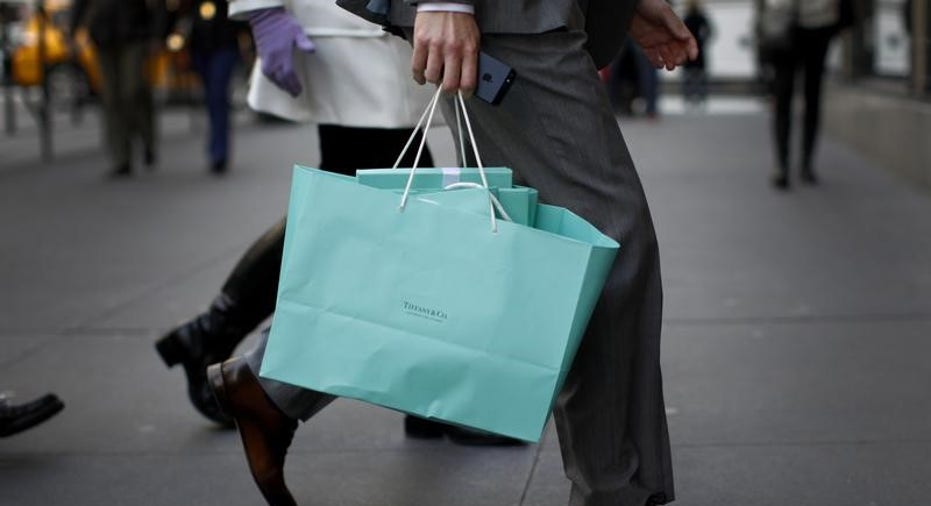U.S. consumer spending slows; business investment perking up

U.S. consumer spending increased modestly in November as household incomes failed to rise for the first time in nine months, suggesting the economy slowed in the fourth quarter after growing briskly in the prior period.
But the economy remains on solid footing, with other data on Thursday showing new orders for U.S.-manufactured capital goods rising last month amid demand for machinery and primary metals, indicating that some of the oil-related drag on business spending was fading.
And while the number of Americans applying for unemployment aid hit a six-month high last week, it remained below a level that is associated with labor market strength.
The Commerce Department said consumer spending, which accounts for more than two-thirds of U.S. economic activity, rose 0.2 percent after increasing 0.4 percent in October. When adjusted for inflation, consumer spending edged up 0.1 percent last month after a similar gain in October.
But the moderation in consumer spending is likely to be temporary against the backdrop of a labor market that is near full employment and consumer confidence that is at cycle highs.
Still, last month's modest gain in consumption, coming on the heels of weak industrial production and housing starts in November, implied gross domestic product growth estimates for the fourth quarter, currently around a 2.6 percent rate, could be trimmed.
The Commerce Department said in another report on Thursday that the economy grew at a 3.5 percent annual rate in the third quarter instead of the previously reported 3.2 percent pace. That was the strongest growth rate since the third quarter of 2014 and followed the second quarter's anemic 1.4 percent pace.
The upward revision reflected stronger growth in consumer spending, business investment in structures and intellectual property products than previously estimated, underscoring the economy's solid fundamentals, which contributed to the Federal Reserve raising interest rates last week.
The U.S. central bank lifted its benchmark overnight interest rate by 25 basis points to a range of 0.50 percent to 0.75 percent, also encouraged by a sturdy labor market. The Fed forecast three rate hikes in 2017.
The dollar was trading lower against a basket of currencies. U.S. government bonds fell as did stocks on Wall Street.
Slower consumer spending last month held back inflation. The personal consumption expenditures (PCE) price index, excluding food and energy, was unchanged after edging up 0.1 percent in
October. That lowered the year-on-year increase in the core PCE price index to 1.6 percent, the smallest gain since July.
The core PCE index increased 1.8 percent in October, which was the biggest gain since July 2014. The core PCE is the Federal Reserve's preferred inflation measure and is running below its 2 percent target.
INCOME FLAT
Consumer spending last month was restrained by a 0.6 percent drop in purchases of long-lasting manufactured goods such as automobiles. Spending on services rose 0.3 percent.
Personal income was flat last month after increasing
0.5 percent in October. Wages and salaries fell 0.1 percent. With consumer spending outpacing incomes, savings fell to $780.9 billion, the lowest level since May 2015, from $809.1 billion in October.
While consumer spending might be cooling, there are signs that business investment is perking up after a prolonged slump.
In a third report, the Commerce Department said non-defense capital goods orders excluding aircraft, a closely watched proxy for business spending plans, increased 0.9 percent after gaining 0.2 percent in October.
A collapse in oil prices last year, together with a surge in the dollar, pressured manufacturing. Much of the impact has been through weak business spending on equipment, which has contracted for four consecutive quarters.
With oil prices hovering above $50 per barrel, manufacturing, which accounts for 12 percent of the U.S. economy, is starting to show signs of life. Gas and oil well drilling has risen over the last several months.
Economists expect business spending to rebound in 2017, driven in part by president-elect Donald Trump's perceived business-friendly policies.
The incoming Trump administration has promised to slash taxes, remove some regulations and increase infrastructure spending. But manufacturing gains are likely to be limited by renewed dollar strength in the wake of Trump's victory.
Since Trump's Nov.8 election victory, the dollar has increased 4.4 percent against the currencies of the United States' main trading partner on concerns that the business mogul's policy agenda could fan inflation.
Last month, shipments of core capital goods rose 0.2 percent after falling 0.3 percent in October. Core capital goods shipments are used to calculate equipment spending in the government's GDP measurement.
A third report from the Labor Department showed initial claims for state unemployment benefits increased 21,000 to a seasonally adjusted 275,000 for the week ended Dec. 17, the highest since June.
Despite the increase, it was the 94th straight week that claims were below 300,000, a threshold associated with a healthy labor market.��That is the longest stretch since 1970, when the labor market was much smaller.
Claims tend to be volatile around this time of the year because of different timings of the various holidays. The four-week moving average of claims, considered a better measure of labor market trends as it irons out week-to-week volatility, increased 6,000 to 263,750 last week.
(Reporting by Lucia Mutikani; Editing by Andrea Ricci)